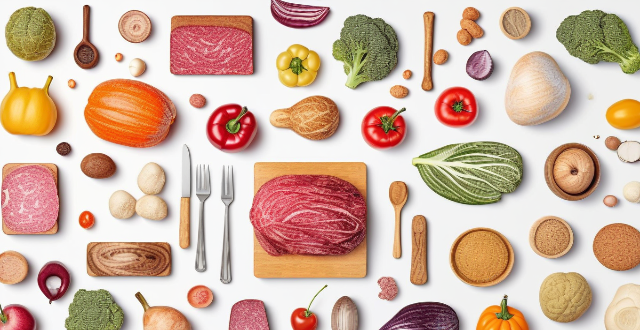Strategies for Cooking Without a Recipe offer guidance on how to create meals without relying on written instructions. The key strategies include starting with simple ingredients, mastering basic techniques, using known flavor combinations, experimenting with seasoning, learning proper food preparation, keeping it simple, practicing portion control, cleaning as you go, and trusting your instincts. These strategies help in exercising creativity in the kitchen and making cooking a liberating experience.

Strategies for Cooking Without a Recipe
Cooking without a recipe can be a liberating experience that allows you to exercise creativity in the kitchen. Here are some strategies to help you cook without relying on written instructions:
1. Start with Simple Ingredients
Focus on ingredients that are easy to work with and have a broad range of uses, such as eggs, pasta, rice, chicken, or ground meat. These versatile ingredients can form the base of many dishes.
Examples:
- Eggs: Scrambled, fried, or used in an omelet.
- Pasta: Tossed in olive oil and garlic or combined with sauces.
- Rice: Served as a side dish or turned into a pilaf with vegetables.
- Chicken: Grilled, baked, or stir-fried with various seasonings.
- Ground Meat: Formed into meatballs, used in tacos, or mixed into sauces.
2. Master Basic Techniques
Having a few cooking techniques under your belt will allow you to tackle a variety of dishes with confidence.
Key Techniques:
- Sautéing: Quickly cooking food over high heat in a small amount of fat.
- Roasting: Cooking food in an oven, usually at high temperatures, until browned and tender.
- Braising: Slow-cooking food in liquid at low heat until it becomes tender.
- Steaming: Cooking food by exposing it to steam, usually over boiling water.
3. Use Flavor Combinations You Know
If you're familiar with certain flavor combinations, use them as a guide for creating meals without a recipe.
Flavor Combinations:
- Italian: Tomatoes, basil, garlic, olive oil, Parmesan cheese.
- Mexican: Lime, cilantro, chili peppers, cumin, avocado.
- Asian: Soy sauce, ginger, garlic, sesame oil, rice vinegar.
4. Experiment with Seasoning
Don't be afraid to add herbs, spices, and other seasonings to enhance the flavor of your dish. Taste as you go and adjust accordingly.
Seasoning Tips:
- Start Small: Add a little at a time; you can always add more but can't take it away.
- Balance Flavors: Aim for a balance of sweet, salty, sour, and bitter tastes.
5. Learn Proper Food Preparation
Knowing how to properly prepare ingredients like chopping vegetables or trimming meat is essential for successful cooking.
Preparation Techniques:
- Chopping: Cutting food into bite-sized pieces.
- Mincing: Finely chopping herbs or garlic.
- Dicing: Cutting food into small, uniform cubes.
6. Keep It Simple
When starting out without a recipe, choose simple dishes that require fewer components and steps.
Simple Dishes:
- Stir-fry: Quickly cook vegetables and protein in a wok or large pan.
- Soup: Boil vegetables, meat, and aromatics in broth or water.
- Salad: Toss together greens, veggies, protein, and dressing.
7. Practice Portion Control
Without a recipe to guide you, it's important to pay attention to portion sizes to avoid waste or not having enough food.
Portion Tips:
- Use Visual Cues: A serving of protein is about the size of a deck of cards.
- Measure Dry Ingredients: For baking or when precision matters, measure dry ingredients.
8. Clean as You Go
Keep your workspace clean by washing utensils and wiping down surfaces as you complete each step. This helps prevent cross-contamination and makes the final cleanup easier.
Cleaning Tips:
- Have a Bowl for Scraps: Designate a bowl for scraps and dispose of them periodically.
- Wipe Splatters: Keep a damp cloth handy to wipe up any splatters or spills immediately.
9. Trust Your Instincts
Trust your taste buds and instincts when cooking without a recipe. If something doesn't look or smell right, make adjustments accordingly. Remember, cooking is an art, and every chef has their own style.